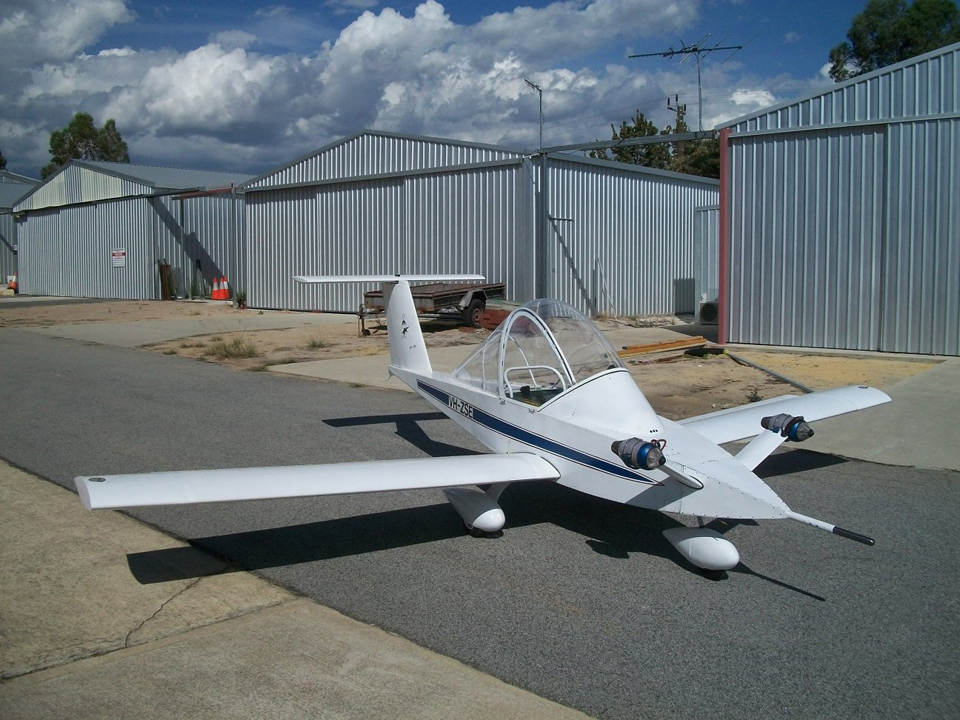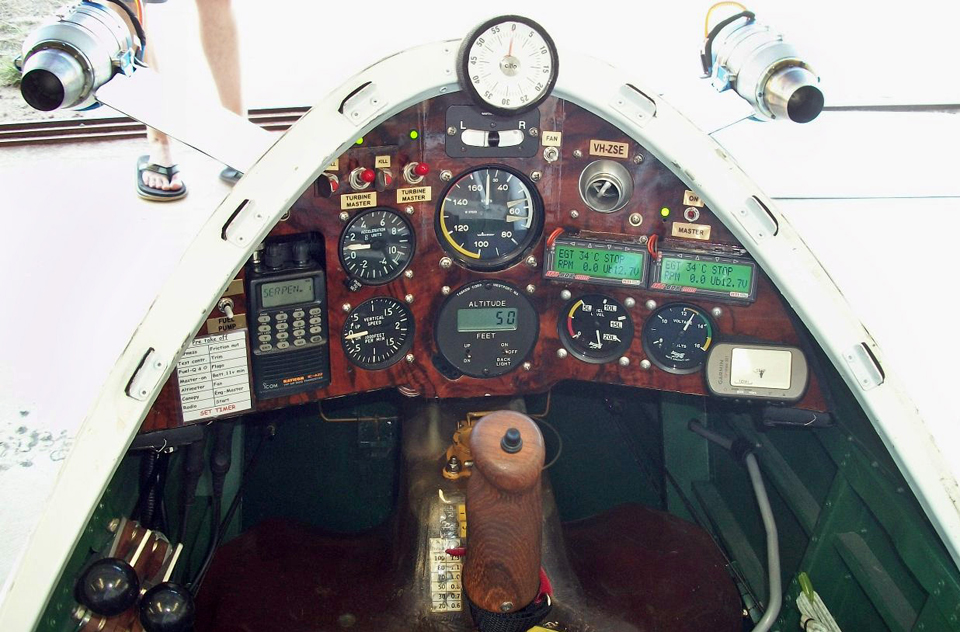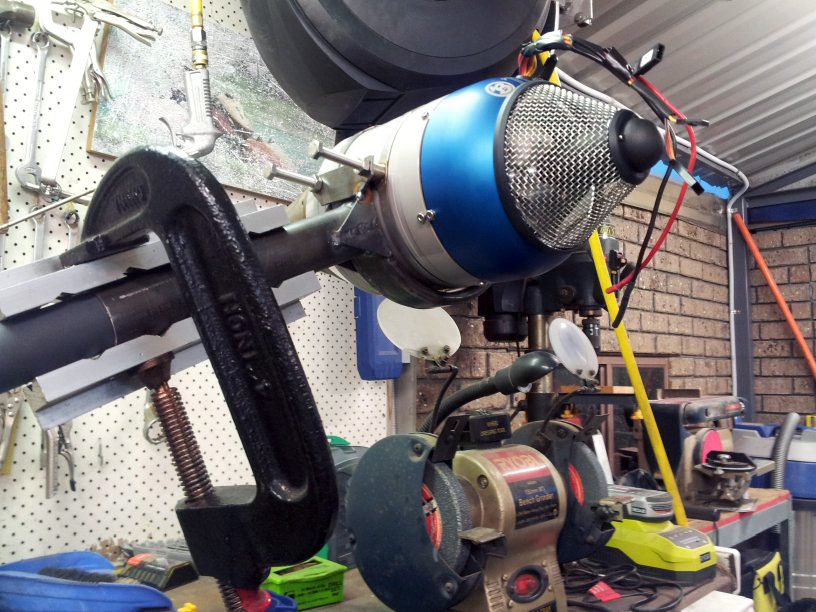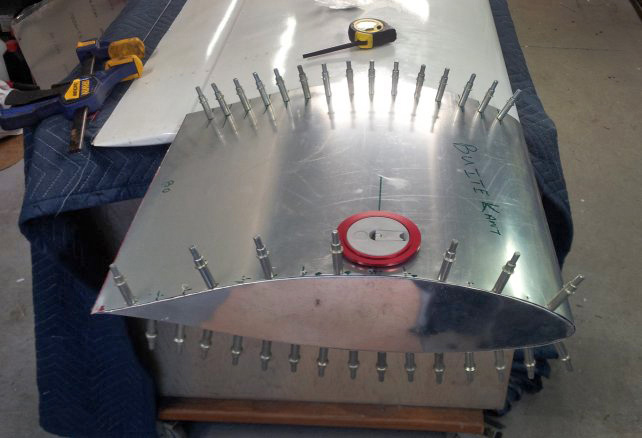Tiny Twinjet
Australia Jet Cri-Cri
By Isak van Heerden, EAA 1112664; Leeming, Australia
April 27, 2016 - We had done a few projects before and were getting restless again. With very little hangar space left, we had to build something small. Since they don’t get any smaller than Michel Colomban’s Cri-Cri, the choice was easy! We were in luck; a club member had an original Cri-Cri project for sale. The project consisted mostly of small parts and only a few larger parts. Most were exceptionally well-manufactured and meticulously labeled.
The Cri-Cri is designed at the outset to be very economical, both to build and to operate. The plans, builder’s manuals, and documentation are truly exceptional. No detail has been spared or omitted. There are even detailed instructions for manufacturing your own tools like a band saw, rivet cutters, and the like. A reasonably equipped workshop does, however, make the job a lot easier.
The construction plans consist of a series of hand-drawn blueprint drawings and accompanying construction manuals. English is clearly not Michel Colomban’s native tongue, and the manuals reflect this. We did, however, find the occasional interesting translation in the documentation quite entertaining.
It took about two years to finish, and the empty weight came in at 190 pounds. Equipped with Limbach two-stroke engines, the first flight took place in February 2012. The experience was significantly different from what we were used to. Slower, noisier, and a lot of “buzz” vibration. Still, the Cri-Cri turned out to be a delight to fly. The controls are light and very well harmonized. Typical flight time in the Cri-Cri is around half an hour.
At 23 flight hours we discovered a fatigue crack in the right engine pylon. The vibration of the two-stroke engines obviously took its toll on the engine mount. The airplane was immediately grounded. After a lot of testing and analysis, we came up with a couple of workable solutions for mounting the Limbachs on redesigned pylons. However, by now Limbach had closed down its business in Germany, and obtaining spare parts for the engines was becoming a problem, so thoughts turned to alternative means of propulsion.
A friend of ours, Maurits van Rooy of VR Avionics in Canada, suggested that we consider one of the turbojet engines from První brněnská strojírna Velká Bíteš (PBS). We looked at what it had to offer, and its TJ20A seemed to suit our needs perfectly. The Cri-Cri is one of very few aircraft that can be converted from propeller to jet propulsion with only minor changes to the airframe.
The decision made, the engines were purchased. Now there was no turning back; full kerosene ahead! A few weekends in the shop and the conversion would be complete. If only it were that simple. We designed and manufactured new pylons and engine mounts for the jets. The Cri-Cri nose was also extended and fitted with a tungsten balance weight to compensate for the much lighter turbojet engines. The PBS engines are electronically controlled. The throttle position is converted to a digital signal to communicate with the engines: real fly-by-wire. A fair bit of design effort went into making these systems as reliable as possible.
Fuel was another consideration. The full-throttle fuel consumption of the two jet engines is around 1 gallon every three minutes. Fuel capacity was increased by adding wingtip tanks that provide total flying time of a bit more than 30 minutes. The easy part was the engines themselves. They are little marvels of engineering, and the workmanship is superb. Combine the engines with the very professional support from the PBS engineering staff, and everything worked the first time.
Starting and stopping the engine is simplicity itself. Push the start/stop button and the engine performs a self-test and starts. Push it again, and the engine stops and enters an automatic cool-down cycle.
The first flight with the jet engines was in October 2015. As expected, the takeoff roll was a bit longer, but from there on it was simply sublime. Gone were the noise and vibration from the two-stroke engines. Speed increased from 85 knots to 110 knots at 75 percent power. The PBS jets and Cri-Cri turned out to be a very good match. The fuel consumption may seem high, but the flights are short. So the actual cost per flight is not much, and this is by far the most fun per gallon of fuel we have ever had.
Most important of all, a big thank-you to our significant others, Ria and Kerry, for their patience and support.
Share your craftsmanship with readers worldwide! Send us a photo and description of your project at editorial@eaa.org and we’ll consider using it in “What Our Members Are Building/Restoring.” Please include your name, address, and EAA number. We reserve the right to edit descriptions.




